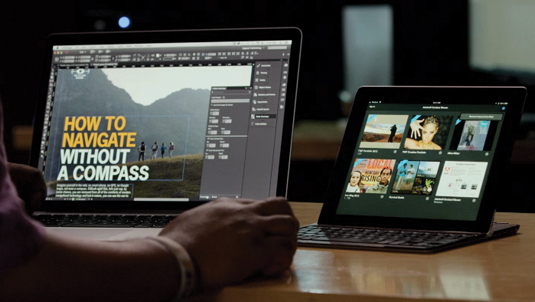[responsive] [/responsive]“Gone are the days when people simply picked up a newspaper, magazine or turned on the television for entertainment, education or news,” writes Mary Hiers in Recruitment ADVisor.
[/responsive]“Gone are the days when people simply picked up a newspaper, magazine or turned on the television for entertainment, education or news,” writes Mary Hiers in Recruitment ADVisor.
“Now more than an ever, people are turning to digital devices. According to CMO by Adobe, From August 2012 to February 2013, there was a 200 percent average growth in readers of digital publishing apps,” Hiers continues, noting that “in today’s society, people want their information now, and easily available at their fingertips. Computers, smartphones, laptops and tablets make that possible. If your company has yet to make digital its primary focus, below are a few things you may want to consider.”
Okay, we were curious what else she had to say, but diving deeper into her article we found her arguments were at best flimsy.
Hiers cited the MPA 2013-2014 Factbook when she said that “users with both mobile and tablet access spend 23 percent of their engagement time reading magazines on their smartphones. When it comes to tablets, that number stands at a whopping 75 percent. Clearly, there’s no denying the appeal of digital media.”
We read the same report, and found some pretty conclusive evidence that yes, we can deny the appeal of digital over print. Consider these facts (also from the MPA report):
- Print magazine readers spend more time online than non-readers;
- They made purchases online more frequently;
- Magazines were top drivers for online search; and
- Magazines outperform TV and digital content in critical purchase drivers of brand awareness, favorability and purchase intent.
In her list of “pros” for digital-first, Hiers notes that “you’ll generate additional revenue,” referencing a two-year old article from eMarketer that notes the digital revenue will “edge up” in the next few years. Fast forward to today’s reality, and we are seeing declines in digital ad pages.
Her argument that digital is more cost-effective rings hollow, as nowhere does she address the cost of actually creating the content that will appeal to consumers and advertisers, but instead focuses on the cost of putting up and “maintaining” a website.
Hiers ends her article with a sweeping (and unsubstantiated) claim that “as more people become connected to the Internet, through their mobile devices, digital media will ultimately surpass traditional forms of media.” Yes, she mentions the demise of the print versions of PC World, Golf World and Jet, but doesn’t bring up the Newsweek rebirth, or the slew of new magazines launching and making money all around the industry. Maybe she just doesn’t want to know?
The digital content industry had a fantastic moment a few years back, with the perfect storm of a heightened awareness of content marketing coming at a time of massive shakeup in the print magazine industry. A whole new industry has sprung up around it, and of course they will lobby to maintain the money flowing in their direction.
But let’s not be tempted to fall for big sounding ideas that have little to back them up.
